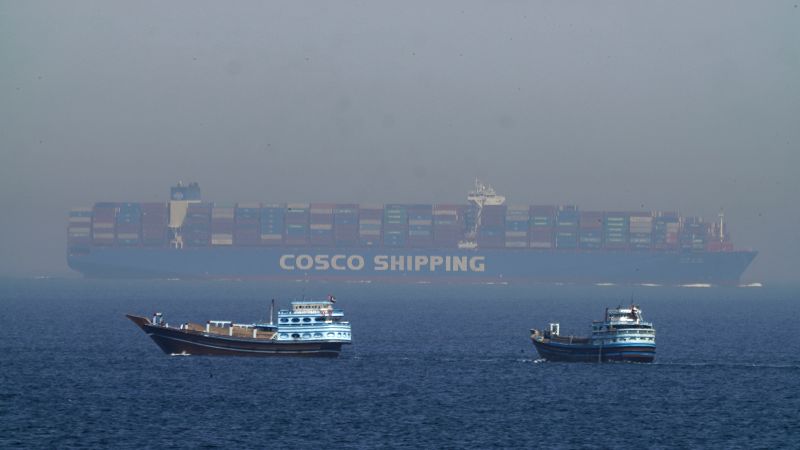What Happened
Recent developments in the Middle East, particularly the escalation of conflict between the United States and Iran, have led to significant fluctuations in crude oil prices. Following U.S. airstrikes on Iranian nuclear facilities, oil futures surged, with Brent crude briefly exceeding $80 per barrel, marking the highest price since January 2025. This spike was primarily driven by fears of potential Iranian retaliation, particularly concerning the Strait of Hormuz, a critical maritime route for global oil shipments. Despite the initial surge, prices later retreated, with Brent trading at approximately $76.49 per barrel and West Texas Intermediate (WTI) at $73.38.
The Strait of Hormuz is a vital chokepoint through which about 20 million barrels of oil—approximately one-fifth of daily global production—are transported. Iran’s control over the northern side of this waterway raises concerns about the potential for disruptions to oil supply, which could have far-reaching implications for global markets. Analysts are closely monitoring Iran’s response to the U.S. actions, as any significant military escalation could lead to further increases in oil prices.
Key Details
- Oil Price Movements: Following U.S. airstrikes, Brent crude oil prices surged by around 10% since the onset of hostilities, reaching a peak of over $80 per barrel before settling lower.
- Strait of Hormuz: This narrow waterway is only 21 miles wide at its narrowest point and is the sole route for oil exports from the Persian Gulf. Approximately 84% of the crude oil and 83% of liquefied natural gas passing through the strait is destined for Asian markets, particularly China, India, and South Korea.
- Market Reactions: Initial market responses included a brief spike in oil prices and a firming of the U.S. dollar. However, the overall market reaction has been described as muted, with many investors adopting a wait-and-see approach regarding Iran’s next moves.
- Geopolitical Context: Analysts suggest that while the U.S. strikes may have temporarily heightened tensions, the market currently views the situation as potentially contained, rather than indicative of a broader conflict.
Multiple Perspectives
Market analysts have varied interpretations of the situation. Some, like Rob Thummel from Tortoise Capital, warn that any disruption to the Strait of Hormuz could push oil prices toward $100 per barrel. Conversely, Vandana Hari of Vanda Insights argues that the likelihood of Iran blocking the strait is low, given the potential economic repercussions for Iran itself and its relationships with neighboring oil-producing countries.
Others, such as Carol Kong from the Commonwealth Bank of Australia, emphasize that the current market sentiment is cautious, with a focus on how geopolitical developments might influence inflation and economic stability. Charu Chanana from Saxo notes that the market may be interpreting the U.S. strikes as a one-off event rather than a precursor to a larger conflict, which could mitigate immediate concerns about oil supply disruptions.
Context & Background
The Strait of Hormuz has long been recognized as a crucial artery for global oil transportation, making it a focal point in geopolitical tensions involving Iran. The recent U.S. military actions are part of a broader context of escalating hostilities between Iran and Israel, with implications for regional security and global energy markets. In 2024, oil prices had stabilized between $60 and $75 per barrel, but the current conflict has introduced new volatility.
China’s significant reliance on oil from the Strait—5.4 million barrels per day in early 2025—highlights the potential economic impact of any disruptions. India and South Korea also depend heavily on this route, importing 2.1 million and 1.7 million barrels per day, respectively. The geopolitical landscape is further complicated by calls from Iranian officials for the closure of the strait in response to U.S. actions, which could escalate tensions further.
What We Don’t Know Yet
As the situation continues to evolve, several uncertainties remain. The most pressing question is how Iran will respond to the U.S. strikes and whether it will take any actions that could disrupt oil shipments through the Strait of Hormuz. Additionally, the potential for further military escalation in the region raises concerns about broader economic impacts, including inflation and global recession risks.
Market analysts are also uncertain about the long-term implications of these developments on oil prices and global supply chains. The interplay between geopolitical risks and economic fundamentals will be crucial in determining future market behavior. Investors are advised to remain vigilant as the situation unfolds, given the potential for rapid changes in sentiment and market conditions.





